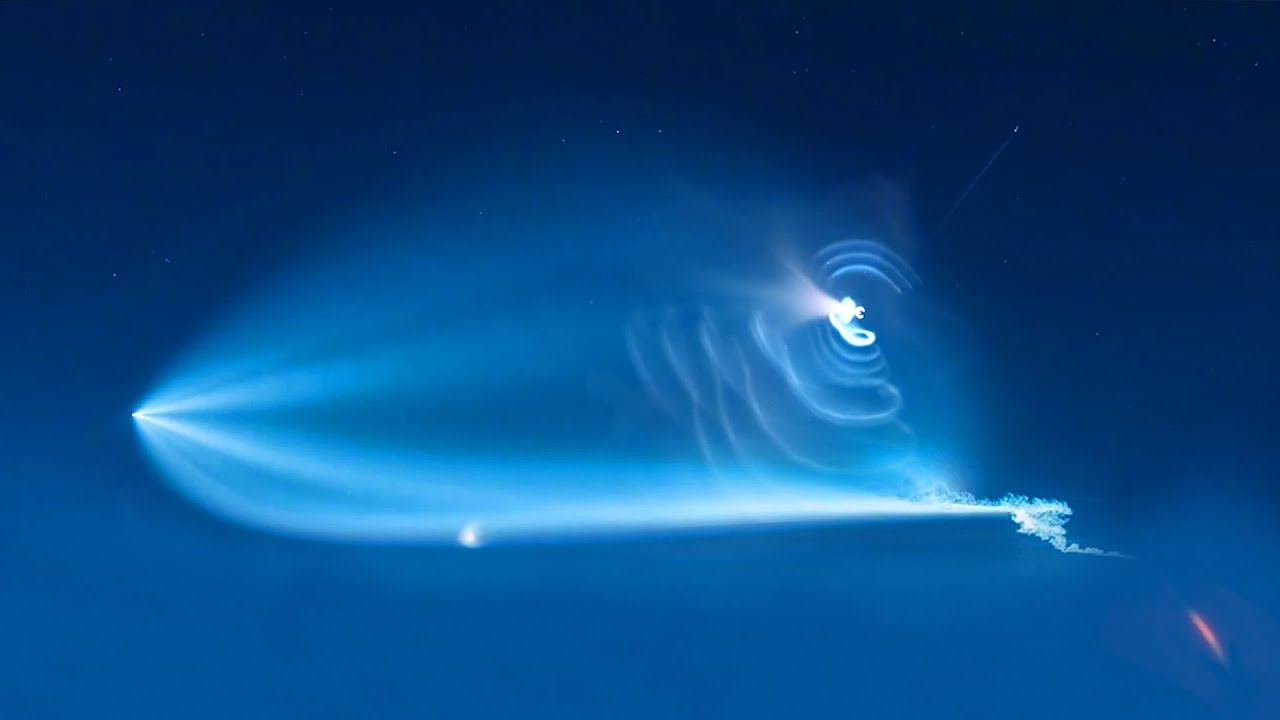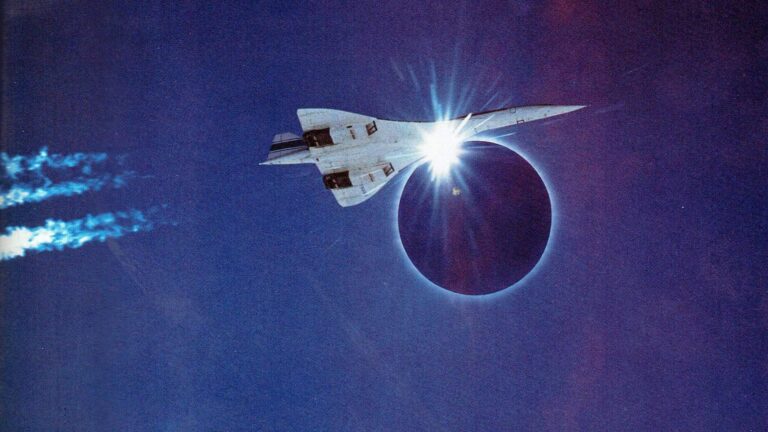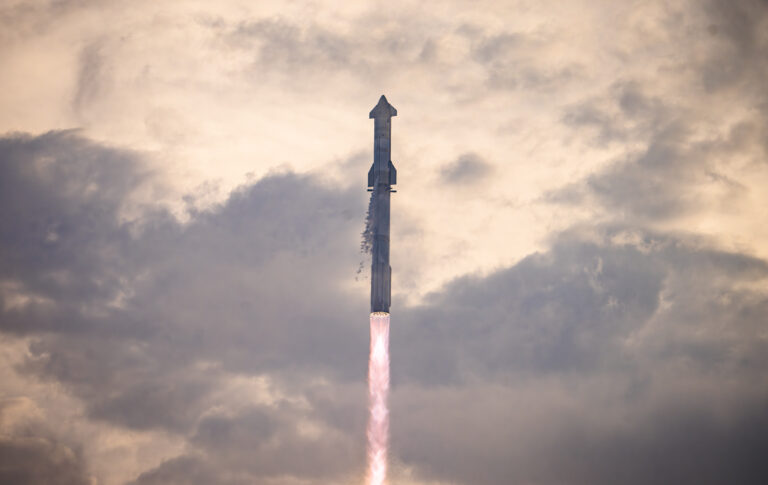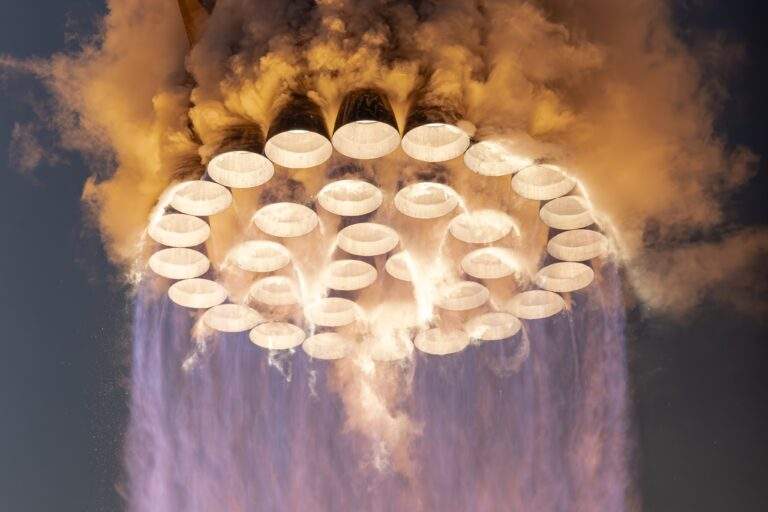This is the Falcon 9 launching from Vandenberg Air Force Base in California, a state known for its vibrant aerospace industry and contributions to space exploration. The Falcon 9, a two-stage rocket developed by SpaceX, has become a familiar sight in the skies, captivating audiences with its impressive launches and groundbreaking missions. This particular launch produced a spectacular display above the Californian night sky, leaving spectators in awe of the mesmerizing phenomenon that unfolded before their eyes.
Rocket launches have always been a fascinating spectacle, capturing the imagination of people across generations. The sheer power and technological prowess exhibited during these missions remind us of humanity’s remarkable achievements in conquering the vastness of space. From the early days of space exploration to the present, rockets have served as the vehicles that propel us beyond the confines of our planet, opening up new horizons and expanding our understanding of the universe.

But every now and then, they produce stunning displays like this, leaving spectators wondering about the underlying factors that contribute to such an unusual effect. The answer lies in a phenomenon known as the Twilight Effect, which occurs under specific atmospheric conditions and timing.
Rocket launch timing
In order for the Twilight Effect to occur, the rocket in question needs to launch around 30 minutes before sunrise or after sunset, a narrow window of opportunity that aligns celestial and terrestrial elements in a remarkable way. This specific timing creates a unique interaction between sunlight and the rocket’s exhaust plume, giving rise to a breathtaking visual spectacle that defies the darkness of the night sky.
As the rocket rises out of the night sky, it starts to escape the Earth’s shadow, transitioning from the realm of darkness into the realm of light. This celestial dance symbolizes the triumph of human ingenuity and curiosity, as we venture into the unknown and strive to unravel the mysteries of the cosmos.
The rocket’s exhaust plume, composed of superheated gases and particles, is then illuminated by the high altitude sunlight which hasn’t yet been blocked by the Earth. This interplay of light and shadow creates a captivating contrast, as the radiant plume emerges from the darkness, casting a mesmerizing glow against the backdrop of the night sky. The brilliance of the illuminated plume captures the attention of onlookers, evoking a sense of wonder and enchantment.
To an observer on the ground, the area around them is in darkness, a cloak of night that envelops the surroundings. However, against this backdrop, the rocket’s exhaust plume stands out as a luminous trail, accentuating the magnitude and energy of the launch. The contrasting elements of light and darkness, motion and stillness, merge to create a visual spectacle that leaves an indelible impression on those fortunate enough to witness it.

What happens during a rocket launch
As the rocket gets higher and higher, piercing through the layers of Earth’s atmosphere, it enters a realm of diminishing atmospheric pressure. This gradual drop in pressure has a fascinating consequence on the rocket’s exhaust plume. The expanding vacuum allows the exhaust plume to disperse and expand, creating a visually captivating phenomenon. The once concentrated trail now transforms into a much wider and more intricate display, embracing the canvas of the night sky.
The dance of the upper-level winds adds an intriguing twist to the spectacle. These winds, influenced by atmospheric dynamics, interact with the expanding exhaust trail, sculpting it into a mesmerizing corkscrew shape. The convergence of forces creates a captivating visual whirl, as if nature itself is choreographing a celestial performance.
Within this ethereal tapestry, a phenomenon of light unfolds. The exhaust plume, consisting of tiny particles and gases, becomes a canvas for the play of sunlight. As the rocket continues its ascent, the unobstructed high-altitude sunlight encounters these microscopic particles, leading to a captivating display of diffracted light. The diffraction process scatters the sunlight, creating a rich palette of hues that adorn the plume with vibrant shades of orange and blue. It is this interplay of light and matter that amplifies the already stunning effect, transforming the night sky into a mesmerizing celestial canvas.
Rocket launches that produce the Twilight Effect are indeed rare, adding an element of exclusivity and anticipation to these extraordinary events. Since the inception of Vandenberg Air Force Base in 1958, a multitude of missiles and rocket boosters have been launched into the heavens. However, only a select few of these launches have yielded the mesmerizing Twilight Effect. The rarity of this phenomenon further amplifies its allure, turning each occurrence into a cherished and treasured memory for those fortunate enough to witness it.
One of the most spectacular examples of the effect was seen during a recent launch of the Falcon 9. During this launch, the Twilight Effect allowed us to see the first stage and the two fairings separating from the second stage.
The growing rocket plume
Notably, as the rocket ascends higher into the sky, the atmospheric pressure gradually decreases. This atmospheric change causes the rocket’s exhaust plume to expand, creating a visually captivating trail that widens in size. It is a mesmerizing sight to behold as the upper-level winds gracefully twist and shape the exhaust trail into a captivating corkscrew pattern. The interplay of light and particles within the plume further enhances the spectacle, as the tiny particles diffract sunlight and produce vibrant hues of orange and blue. This symphony of colors adds an extra layer of awe to the already stunning Twilight Effect.

Rocket launches that produce the Twilight Effect are very rare. Since 1958, over 1,800 missiles and rocket boosters have been launched from Vandenberg, but only a few of those launches have produced the Twilight Effect. These occurrences are cherished moments that captivate both casual observers and space enthusiasts alike, reminding us of the awe-inspiring nature of space exploration and the boundless beauty of our planet and the cosmos.














I don’t think the title of your article matches the content lol. Just kidding, mainly because I had some doubts after reading the article.
Thanks for sharing. I read many of your blog posts, cool, your blog is very good.